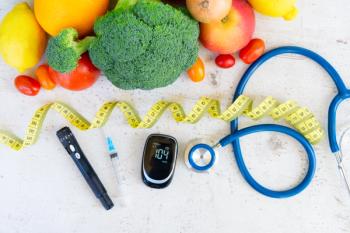
Seasonal Affective Disorder
What Is Seasonal Affective Disorder?
Seasonal affective disorder (SAD) is a form of depression that affects about 10 million Americans. People with SAD may have the common symptoms of depression. These include changes in mood, appetite, energy levels, and sleeping patterns. In SAD, however, the symptoms follow the seasons of the year. Depressive symptoms usually begin in the fall, peak in the winter, and clear up in the spring and summer. SAD is sometimes referred to as winter depression. Yet, a small minority of patients will experience these symptoms in the summer months. This is called summer depression.
What Are the Symptoms of SAD?
People with the more common form of SAD usually have less energy in the colder months. They often crave carbohydrates and sweets, gain weight, and sleep a great deal with the change from fall to winter. Individuals with summer depression more often have poor appetite, weight loss, and insomnia.
Other depressive symptoms with both forms of SAD may include difficulty concentrating, irritability, crying episodes, and, in extreme cases, thoughts of suicide. Patients with SAD usually experience these symptoms at about the same time each year.
What Are the Risk Factors for SAD?
People who live in northern parts of the world or in locations with a reduced amount of daylight or sun are more likely to experience SAD. The disorder is at least 4 times as common in women as in men. SAD is most likely to occur in people in their 30s. Many experts believe that this disorder may be inherited, but this is not certain.
How Is SAD Treated?
Light Therapy
Because SAD is caused by a lack of sunlight, your doctor may instruct you to use a light box or a light visor that you wear on your head like a cap. These devices are usually used for about 30 minutes each day throughout the fall and winter months, or as directed by your doctor. Your doctor will instruct you on the proper distance to sit from the light. You are able to eat and read under the light.
While you are using the light box or visor, your eyes should remain open, but you should not look directly into the light source. Results from light therapy vary, and you may need several weeks of daily treatment before your symptoms improve. Usually, light therapy is continued until the spring.
Light therapy does not have any serious side effects. Some patients, however, may experience insomnia, headaches, eyestrain, or irritability. Insomnia may occur if therapy is performed too late in the day. For this reason, most experts recommend using light therapy in the morning. Ultraviolet sources of light therapy, such as tanning beds, are not recommended for SAD. It is not advisable to use a light box that is homemade. Listed here are some businesses that sell light boxes:
? Apollo Light Systems Telephone: 800-545-9667
? Hughes Lighting Technologies Telephone: 973-663-1214
? Northern Light Technologies Telephone: 800-263-0066
? The SunBox Company Telephone: 800-548-3968
In addition to light therapy, your doctor may recommend that you get plenty of exercise during the months you are affected by SAD. If your symptoms are severe, you also may need to receive psychotherapy and counseling.
Medication
Antidepressant drugs are also used to treat SAD. The ones used most often are called selective serotonin reuptake inhibitors (SSRIs). These include Prozac, Zoloft, Paxil, and Celexa. The doses used to treat SAD are similar to the doses used to treat depression.
The side effects of SSRIs include changes in sex drive or performance, nausea, diarrhea, and insomnia. You should discuss any specific questions concerning these medications with your doctor or pharmacist. You should be sure to mention any prescription and over-the-counter drugs or nutritional supplements you are taking, because these medications may interact with SSRIs. Your doctor will determine whether light therapy, antidepressant therapy, behavioral therapy, or a combination of treatments is best for you.
Resources
Fortunately, SAD is very treatable, and there are many excellent resources available to help you better understand this condition. Some of these resources are:
? National Alliance for the Mentally Ill www.nami.org Telephone: 800-950-NAMI (6264)
? Depression and Bipolar Support Alliance (DBSA; formerly the National Depressive and Manic Depressive Association [NDMDA]) www.ndmda.org Telephone: 800-82-NDMDA (800-826-3632)
? Society for Light Treatment and Biological Rhythms (SLTBR) www.sltbr.org Telephone: 303-424-3697
? National Institute of Mental Health (NIMH) www.nimh.nih.gov Telephone: 800-421-4211
? National Mental Health Association (NMHA) www.nmha.org Telephone: 800-969-NMHA (6642)
Newsletter
Stay informed on drug updates, treatment guidelines, and pharmacy practice trends—subscribe to Pharmacy Times for weekly clinical insights.


















































































































































































































